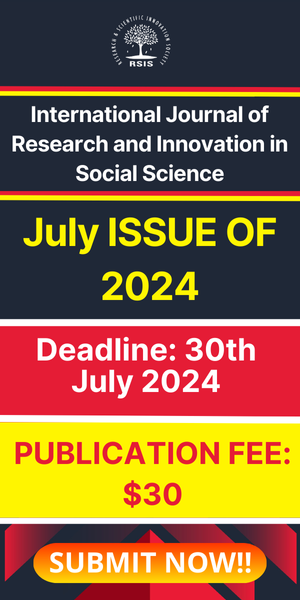The Oral Aesthetic in Barbara Kimenye’s Kalasanda
- April 10, 2021
- Posted by: RSIS
- Categories: IJRISS, Social Science
International Journal of Research and Innovation in Social Science (IJRISS) | Volume V, Issue III, March 2021 | ISSN 2454–6186
The Oral Aesthetic in Barbara Kimenye’s Kalasanda
Felix Ayioka Orina and Christine Namayi
Kibabii University, Department of Eljmc, Kenya
Abstract: Barbara Kimenye is recognized as one of East Africa’s influential writers with her novels and novellas focusing on concerns and styles drawn from her immediate context: East Africa. Through her works, it is not only possible to bring out the flexibility and elasticity of oral traditions but also ways in which the European tradition of the novel and African modes of expression complement each other. Kimenye’s Kalasanda fuses the two traditions to achieve a specific intended effect on and reaction from the reader that she targets. The present study, therefore, is not only an attempt to reveal the universal credentials of the oral traditions but also to show how specific oral tradition features may be determined by both context and the author’s aesthetic aspirations.
Key words: Oral tradition, aesthetics, didacticism, context, European tradition, tricksterism, narration.
I. INTRODUCTION
Most scholarly and critical work touching on the fruitful appropriation of oral traditions in written African literature has disproportionately, owing perhaps to a desire to confirm cultural differences, drawn examples from the works of modern native African writers. Much as Africa has raised a number of famed non-native writers, such as Barbara Kimenye, Marjorie Oludhe, Dennis Brutus, Nadine Gordimer, and Doris Lessing, very little has been said about the capacity of such writers to incorporate oral trends in their works. The present paper seeks to fill that gap by examining how Barbara Kimenyi (un)intentionally experiments with oral tradition methods to not only end up with a familiar aesthetic born of necessity, but also gain acceptance among native people with a long association with African oral aesthetic models.
A cursory look at works by the assumed “outsider” artists reveals an aesthetic strategy not far removed from that used to depict a rich array of worlds in the works of such ‘home-grown’ authors as Margaret Ogolla, Chinua Achebe, Elechi Amadi, Ngugi wa thiong’o, among other African writers whose artistic choices gravitate around the oral aesthetic. In fact, so understandable and recognisable are the aesthetics and worlds, respectively, conjured up by some non-native writers that a non-acquainted reader, literally, needs to be reminded that the said writers are of another pedigree. Roger Kurtz (2005), for instance, in his evaluation of Oludhe’s works, describes her as a ‘fascinating East African voice’ (p. viii). Kurtz, however, observes that Macgoye’s path to acceptance as an author from East Africa has been rather slow. He avers:


